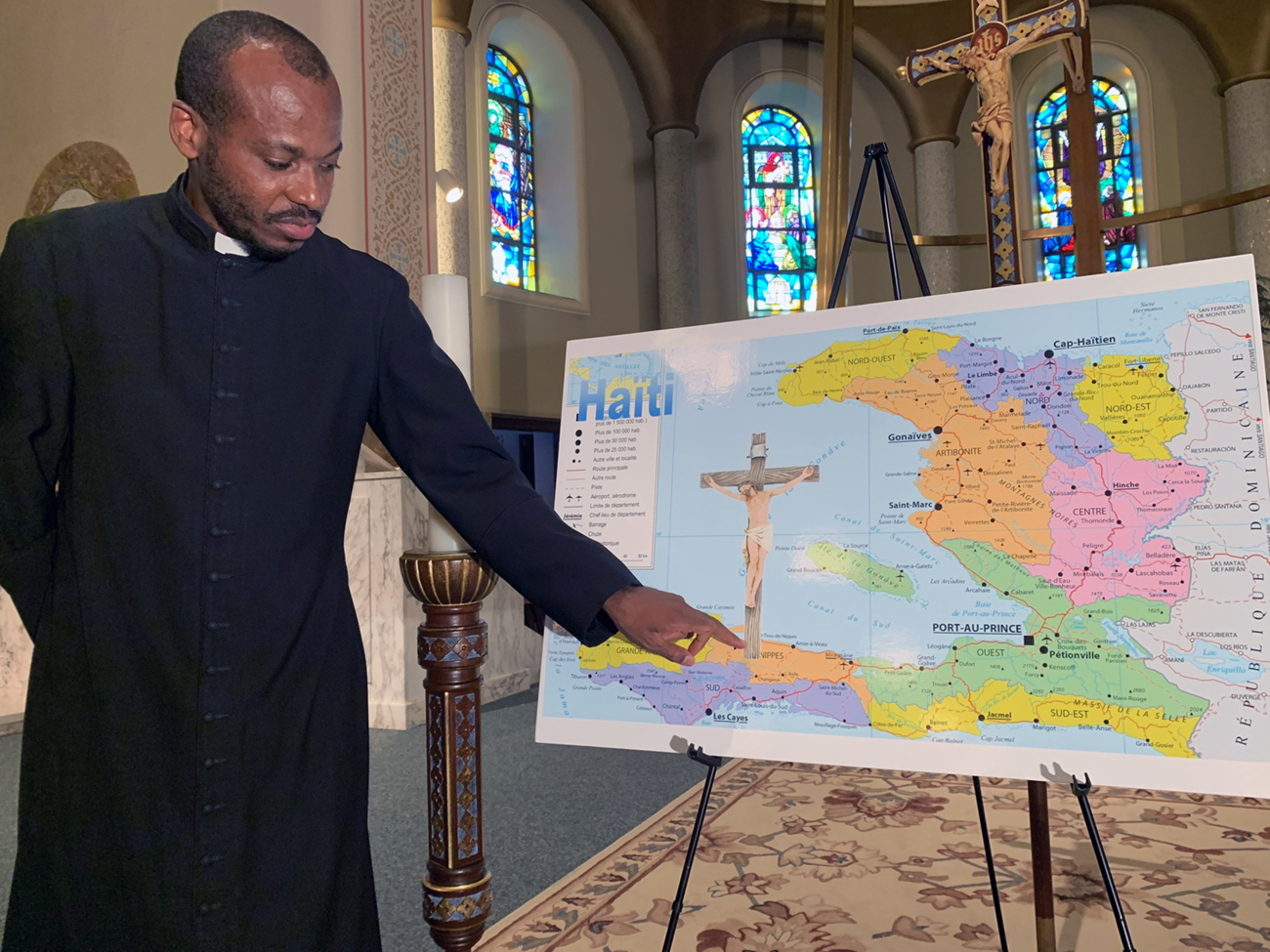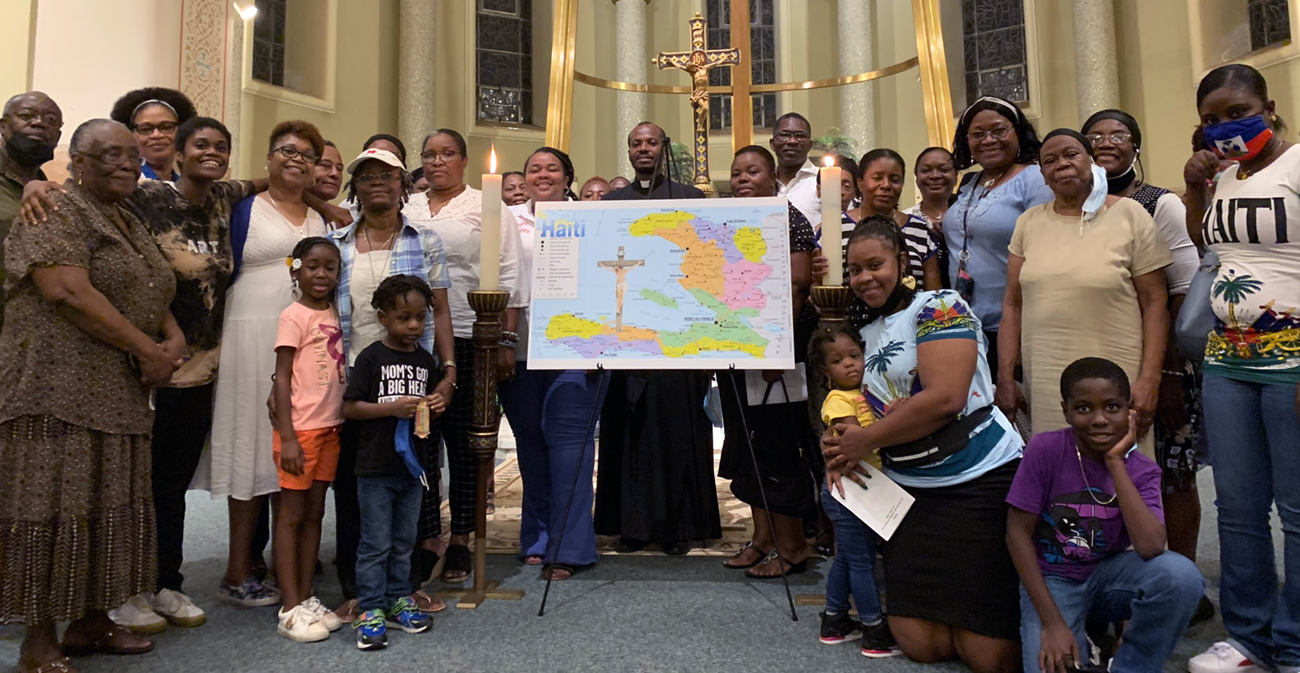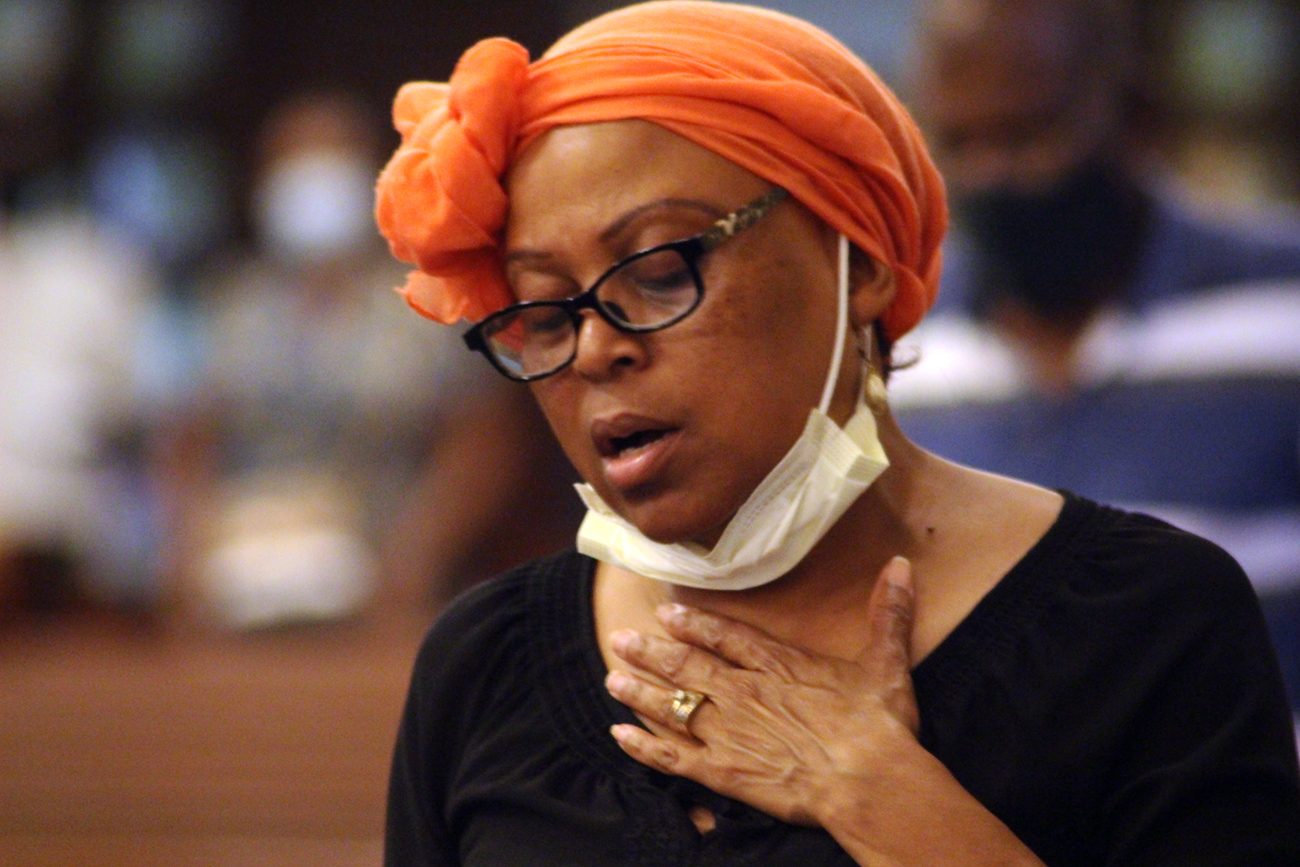Local faithful recently gathered in prayer for Haiti as that nation grapples with the fallout from a devastating earthquake earlier this month.
Some 60 were on hand for an Aug. 20 vespers service in French and Haitian Creole led by Oblate Father Eugène Almonor, chaplain of the archdiocesan Haitian Catholic community, at St. William Parish in Philadelphia.
“For me and for the people here, it is a very sad moment,” said Father Almonor, a native of Haiti.
[hotblock]
A magnitude 7.2 temblor struck the southern region of Haiti Aug. 14, killing more than 2,200 and injuring more than 12,000. The bishop’s residence in Les Cayes collapsed, killing Father Emile Beldor. Cardinal Chibly Langlois sustained non-life-threatening arm and leg injuries; Father Jean-Antoine Coulanges is listed as missing.
According to Voice of America, 18 people attending a baptism were killed in Immaculate Conception Parish church of Les Anglais.
Father Almonor said his congregation, the Missionary Oblates of Mary Immaculate (OMI), “lost all, including school buildings, churches (and) rectories” at its Les Cayes campus. The order reported no injuries, although two employees remain missing.
Just days after the quake, Tropical Storm Grace battered the island nation, hampering rescue and recovery efforts.

Oblate Father Eugène Almonor, chaplain of the archdiocesan Haitian Catholic community, points to the epicenter of an Aug. 14 earthquake that devastated southern Haiti, a location he marked with a crucifix during an Aug. 20 prayer service for victims, held at St. William Parish in Philadelphia. (Gina Christian)
During the Aug. 20 vespers, a map of Haiti was displayed before the altar, with an image of the crucified Christ affixed to the Aug. 14 quake’s epicenter in Petit Trou de Nippes, located some 95 miles east of the capital, Port-au-Prince.
“I put the cross there because it symbolizes suffering, hope and resurrection,” said Father Almonor. “Haiti is down, but it can be raised up, as Jesus was after he died.”
For residents of Haiti – the poorest nation in Latin America and the Caribbean, and among the most impoverished in the world – the latest quake only compounds a relentless series of disasters in recent years.
This month’s earthquake occurred just 60 miles from where a 7.0 quake struck in January 2010, in which an estimated 220,000 died and upwards of 300,000 were injured.
Less than two months ago, Haitian president Jovenel Moïse was assassinated in his home; his wife Martine, who survived her injuries in the attack, has told media that despite the arrest of 44 suspects, the plot’s true ringleaders likely remain at large. The judge overseeing the investigation stepped down after his clerk was killed.
Kidnapping and gun violence continue to plague Haiti, which has been hard hit by COVID – and has struggled to rebuild over the decade since the 2010 disaster.
Amid such turmoil and tragedy, the Aug. 20 vespers focused on the Lord’s mercy and saving power, with participants reciting Scripture passages such as Psalm 121 (“My help comes from the Lord, the maker of heaven and earth”) and 1 Cor 15:55,57 (“Where, O death, is your victory? … Thanks be to God who gives us the victory through our Lord Jesus Christ”).
Hymns and worship songs at the service — such as “An nou bati legliz la” (“Let us build the church”) by Haitian musical artist Gilbert Dabady – also encouraged those present to hold fast to their faith.
Ultimately, rebuilding Haiti – a nation plagued by systemic corruption, according to analysts — will require true conversion, said Father Almonor.
“I think Haiti needs to continue to work toward independence – but when I say ‘independence,’ I mean not a changing of the regime, but independence in the spirit, in the very heart,” he said.
Yet he remains optimistic that his native land can achieve “peace (and) continue to live in solidarity.”
“We must never forget our story,” he said, repeating Haiti’s national motto, L’union fait la force: “Unity creates strength.”

Members of the archdiocesan Haitian Catholic community, with chaplain Father Eugène Almonor at center, gather at St. William Parish after an Aug. 20 evening prayer service for the victims of this month’s earthquake in Haiti. (Gina Christian)
PREVIOUS: Catholic Medical Association joins lawsuit over HHS ‘transgender mandate’
NEXT: Catholic agencies, nuns ‘working diligently’ to help Afghan refugees




Share this story